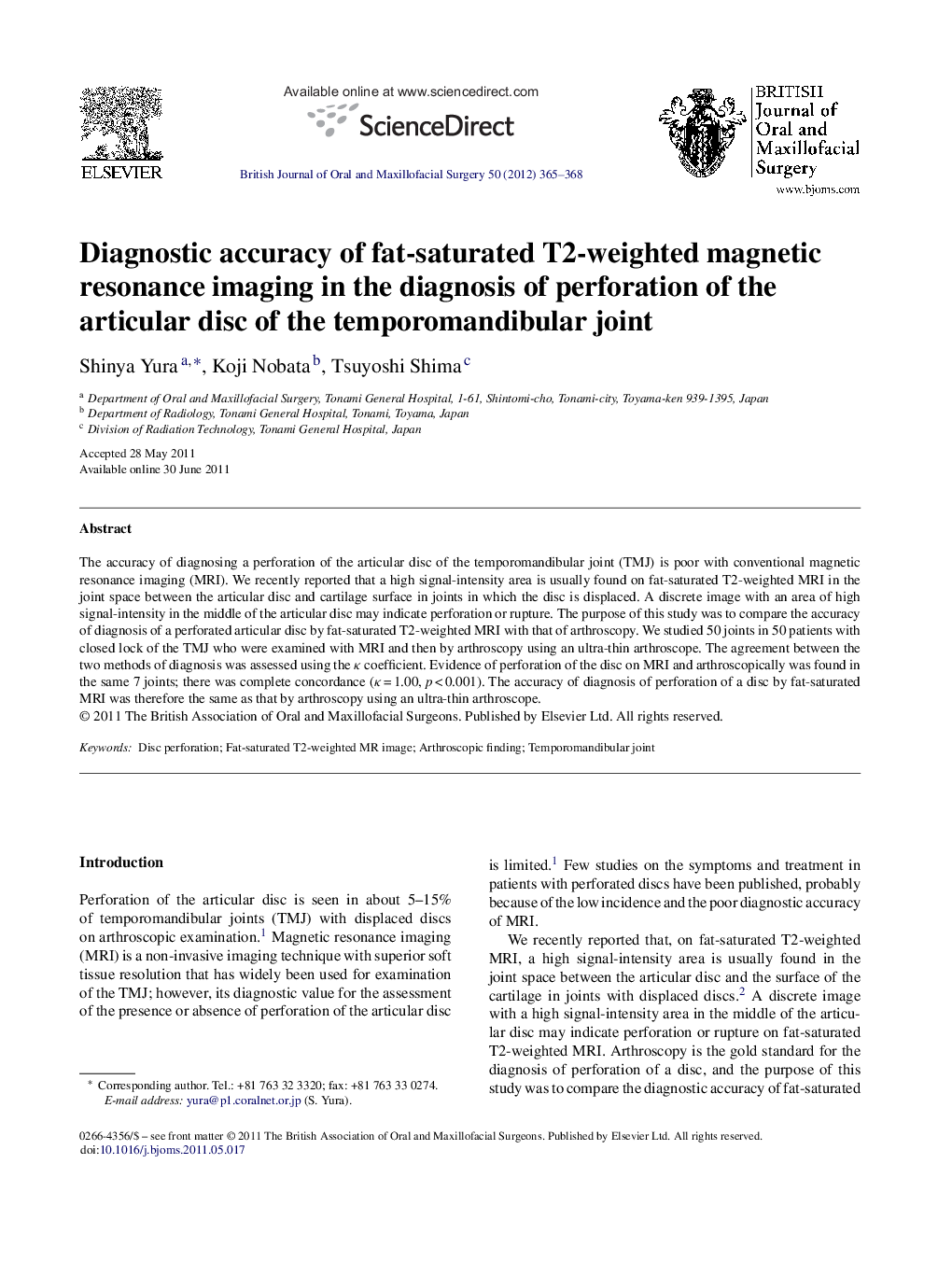| Article ID | Journal | Published Year | Pages | File Type |
|---|---|---|---|---|
| 3123953 | British Journal of Oral and Maxillofacial Surgery | 2012 | 4 Pages |
The accuracy of diagnosing a perforation of the articular disc of the temporomandibular joint (TMJ) is poor with conventional magnetic resonance imaging (MRI). We recently reported that a high signal-intensity area is usually found on fat-saturated T2-weighted MRI in the joint space between the articular disc and cartilage surface in joints in which the disc is displaced. A discrete image with an area of high signal-intensity in the middle of the articular disc may indicate perforation or rupture. The purpose of this study was to compare the accuracy of diagnosis of a perforated articular disc by fat-saturated T2-weighted MRI with that of arthroscopy. We studied 50 joints in 50 patients with closed lock of the TMJ who were examined with MRI and then by arthroscopy using an ultra-thin arthroscope. The agreement between the two methods of diagnosis was assessed using the κ coefficient. Evidence of perforation of the disc on MRI and arthroscopically was found in the same 7 joints; there was complete concordance (κ = 1.00, p < 0.001). The accuracy of diagnosis of perforation of a disc by fat-saturated MRI was therefore the same as that by arthroscopy using an ultra-thin arthroscope.
